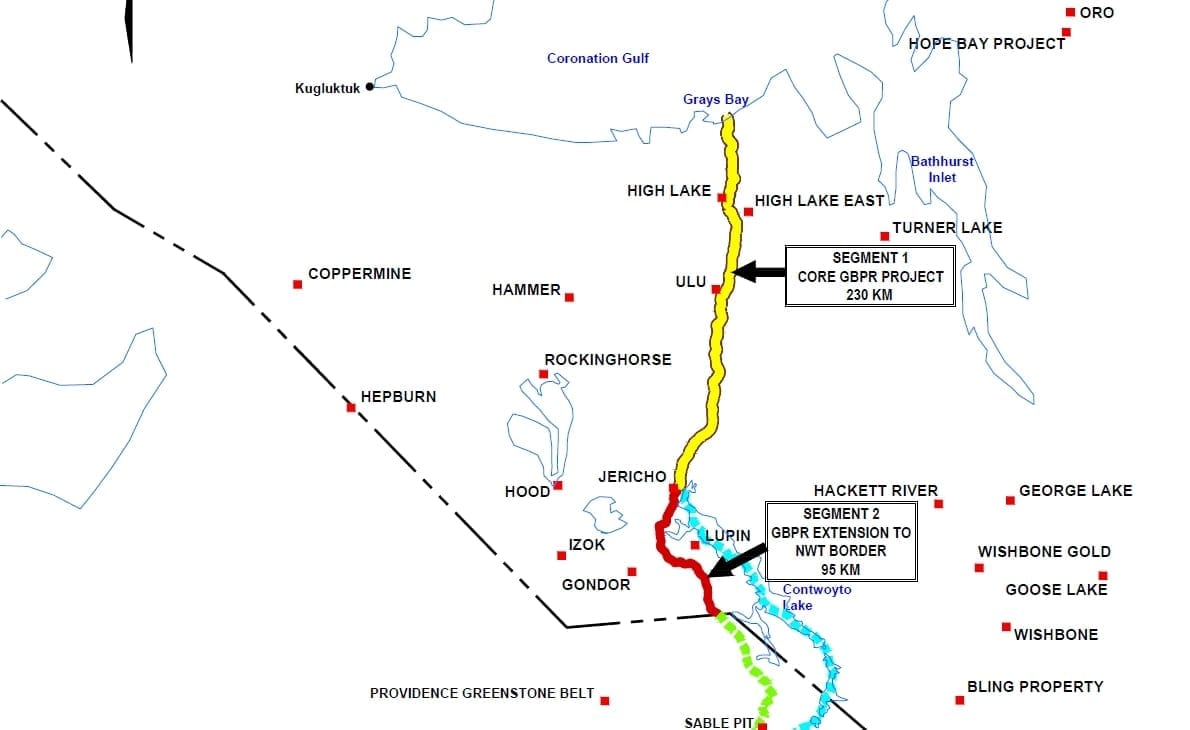Kitikmeot Inuit Association president says 'the ball is back in KitIA's court'
A trade and transportation corridor stretching from the Arctic coast to Yellowknife is closer to reality, according to Stanley Anablak, president of the Kitikmeot Inuit Association (KitIA).

Recent federal funding announcements – $21.6 million to get the Kitikmeot Grays Bay road and port project shovel-ready and $30 million for the Government of the Northwest Territories' proposed connecting Slave Geological Province Access Road project – have given new pertinence to the projects, Anablak wrote in a report tabled during Nunavut Tunngavik Incorporated's annual general meeting in October.
"These two funding announcements significantly advance the long-term vision that (KitIA) shares with the (GNWT)," Anablak stated. "Given that over two days in August, the federal government made a combined investment of over $50 million in this corridor, I believe that they are taking this vision seriously."
Anablak wrote, "This federal funding breathes new life into our project. With this funding, we can re-focus on finishing an innovative environmental assessment process where Inuit traditional knowledge will play a key role. We will also be able to carry out complex engineering studies and be in a position to secure all the permits required to build our project. It is also noteworthy that this is the first time that a regional Inuit association has been a proponent of a major project in front of the Nunavut Impact Review Board."
However, on a project of this scale there's still much that has to be done in terms of acquiring funding for the project, which carries an estimated $525-million price tag.
"Nothing is guaranteed at this stage, but I believe that the door is open," stated Anablak. "Now that funding for project permitting is in place, the ball is now back in KitIA's court."
He identified three "key tasks" that must be pursued over the next two to three years: getting the project shovel-ready; engaging with and encouraging the federal government to identify or create infrastructure programs to finance the road and port project; and to ensure that Kitikmeot businesses and people are ready to take advantage of the potential opportunities to come.
Anablak also stressed the economic benefits of such marine and terrestrial infrastructure in his report, while also expounding on how it would benefit Nunavut's Inuit.
"We can expect to see huge improvements in community resupply, marine safety, Arctic sovereignty, regional economic development and international investment. The port on the Coronation Gulf will provide direct access to international markets. It will make us more connected to the world, but in a way where Inuit have control – because we will be owners of the infrastructure.
"We are breaking trail for other Inuit organizations and for Indigenous people across Canada's Northern regions."